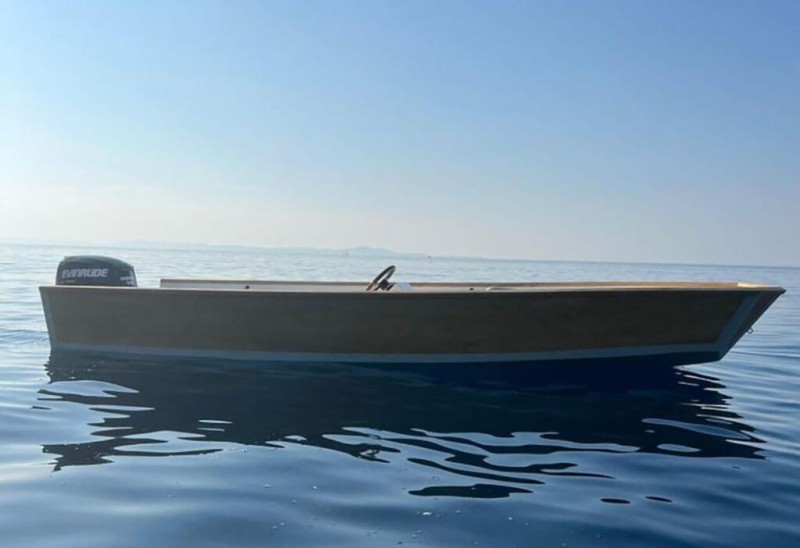
Greenboats © Rudi
Bcomp and the PROeco solar catamaran
At the latest JEC World 2025, Bcomp presented a natural fibre ampliTex™ composite seat in the Planet Innovation area. This seat came from the solar-powered PROeco eco-catamaran, designed to carry 100 passengers, for which the company partnered with Marservis. While Bcomp’s ampliTex™ materials are most visible in the seats, they are also used in the construction of nearly all non-structural and semi-structural components, including bulkheads, ceilings, side panels and parts of the flooring.
These parts were manufactured by combining ampliTex™ laminate with bio-based epoxy resin using vacuum infusion and RTM processes. The combination of electric and solar propulsion with innovative bio-based materials – replacing conventional glass, polyester and vinylester – significantly reduces emissions both during manufacturing and throughout the vessel’s operational life.
Natural fibre composites are paving the way for a new era of environmentally friendly mass transport on waterways.

EcoTechnilin and Beneteau: reinventing the hatch panel
EcoTechnilin has also announced a new production-scale application in the marine sector, having partnered with Beneteau and Chomarat to develop a new lightweight and sustainable hatch panel, highly resistant to harsh marine conditions.
This innovative boat component features a reinforcement made from EcoTechnilin’s hemp fibres, reducing the overall weight of the part. The integration of a non-woven reinforcement technology ensures structural strength while maintaining a low environmental footprint (LCA).
Its clean design ensures watertightness, improving both safety and longevity. This innovation has proven fully compatible with Beneteau’s existing manufacturing processes.
Greenboats and Rudi: a shared boat on circular structures
Greenboats continues to lead the way in the maritime sector. The company is developing Rudi, a 6-metre-long lightweight motorboat made from natural fibre composites, built using flat composite panel assembly.
Rudi hulls are also available via the company’s circular structures sharing platform, where the boat-owning brand manages a revenue-sharing model with operators and partners.
This approach lowers entry barriers for operators and end-users, making the product more accessible while enhancing the overall efficiency of its lifecycle.
The panels used in Rudi boats are made from flax fibre composites, bio-resins and recycled materials, manufactured by Bremen-based composite panel producer Fassmer.
Greenboats reports that life cycle assessment data suggests a potential carbon footprint reduction of over 60% compared to traditional fibreglass and polyester resin constructions. The combination of sustainable materials and the circular structures platform could set a precedent for other industries to follow.

Yamarin and Yamaha: towards production boats with flax fibres
The Alliance witnessed the launch of the Yamarin Cross Concept Boat, as the company – and its parent group Yamaha Motor Corporation – conducts real-world trials exploring low-impact materials in their drive towards carbon-neutral production by 2035.
This project, which showcases the growing use of natural fibres and recycled plastics in yacht construction, is particularly significant as Yamarin – a mass producer of accessible small boats – pilots these materials within a concept that could easily be scaled for series production. The flax used in the new boat is a non-crimp fabric supplied by Saertex – in partnership with Terre de Lin for the roving – and is expected to reduce the deck’s carbon footprint by 55% compared to traditional composites.
Yamarin’s builder, EKA Composites, used a transparent gelcoat on part of the boat’s deck to highlight the natural texture of the fibres within the stitched reinforcement – demonstrating how lighter, higher-performing flax fibres can replace glass in production vessels.
Whether for prototypes, production models or even commercial vessels, flax fibre composite manufacturing in the marine industry is now poised for wider adoption. Major shipyards have validated its performance – both mechanical and in terms of production integration – and flax fibres are now ready to set sail.






 Lu public network security: 37140202000173
Lu public network security: 37140202000173



